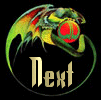




Throughout history there has always been a fascination with dragons. In almost every culture across the world some part of the myth and legend of the culture references dragons in some way. Throughout Asia dragons are an important part of their culture, and revered as the most powerful symbol. Asian culture does not perceive dragons as evil beings, but instead as a symbol of power. Even in western culture dragons are looked upon with awe and considered a very powerful symbol, though in western culture they have become more of a symbol of evil than good. If all of the creatures of fantasy and myth, dragons are the most widespread and most popular of creatures. Because of this popularity however, they are probably the most misunderstood and varied of creatures. No matter what culture you look at you will find references to both good and evil dragons. So why is it in today's culture, we find that the general viewpoint on dragons is that they are an evil creature and one that society can not accept? Let's take a look now at dragons in general and answer some of the most burning and in-depth questions you have about dragons. The first thing we need to look at is; what is a dragon? Well, it all depends on what culture you are from, and where you live in the world today. As a general rule however dragons resemble some sort of a reptile with scales covering their entire body. The coloring of a dragon varies so greatly that most cultures have classified them through the different colors that exist. Dragons are generally very large creatures with powerful teeth and claws, which aid them in necessary fights. With the general appearance of dragons, we now must look at the differences between cultures. Some cultures say that dragons are wingless, where others say that they all have great wings, using those wings to help propel them into the night's sky. Some cultures also say that dragons have additional weapons including the ability to breathe fire or even magical abilities. Let us assume then that everyone is right, and that there are dragons with wings, and some without and some dragons can breathe fire and most even have some kind of magical abilities. Now here is the biggest difference with dragons and their anatomy that you will find as a belief here on the Drakkan Web. Even though they have the look of reptiles, they are warm blooded creatures. It is because they are warm blooded that you will find them in every climate possible. Once you take all of these factors into consideration, you may be able to look at dragons in a little different light. Unlike most other creatures of fantasy and legend, dragons closely resemble the human race. Dragons are different, and though you may be able to classify them into groups, even within the groups there are differences from one dragon to the next. There are both good and bad dragons just as there are good and bad people. Dragons are feared and considered evil by most people just because they are different. As with every myth or legend there is always some truth in the legends. Where then does the truth lie in the legend of the dragon? Many believe that the legend of the dragon was born from dinosaurs, but I beg to differ. Dragons have been entrenched in the legends of various cultures far longer than archeologists have been digging up dinosaurs, and the only physical traces that anyone has been able to find concerning dragons has been in the artwork and symbolization of the different cultures that archeologists are now finding and in the stories and legends passed down from generation to generation. So where then does the myth of the dragon come from, and why are there traces of dragon legend in virtually every known culture? The answer is very simple, yet it is not one that many will believe. Dragons are magical creatures born with intelligence superior to our own and with abilities we could never imagine. Dragons did not materialize in legends of different cultures throughout time because of some coincidental discoveries, but in the actual interaction with these wonderful creatures. Creatures of fantasy and legend pass from this world in the same way they live within the world; in ways we can not comprehend. When a dragon dies, its physical body stays behind for a time, and then it simply joins its spirit in the afterlife, whether it ascends to the stars (i.e.: Dragonheart) or just simply vanishes, either way, there is no trace of it's physical being after it passes on. And so the age-old question will never be answered, but this does pose a new question we should be asking ourselves. Do dragons and other creatures of fantasy and legend still walk among us? My answer to this is, you never know. You may be talking with one of us now. You may pass one of us on the street and never know it. Dragons are creatures of extreme intelligence and magic. Who is to say that we do not exist? Have you ever gone walking on a clear, sunny summer day and had a shadow pass over you, then as you look to the sky there is only sunshine and no trace of a cloud in the sky? Have you ever gone walking at night and heard sounds you couldn't explain, or felt like someone was watching you when you couldn't see a thing and no one was around? We are among you. All you have to do is believe and listen to the sounds of the wind. We will not reveal ourselves to you, but if you look close enough, you just might catch a glimpse of one of us out of the corner of your eye.
This is a Safe Zone



